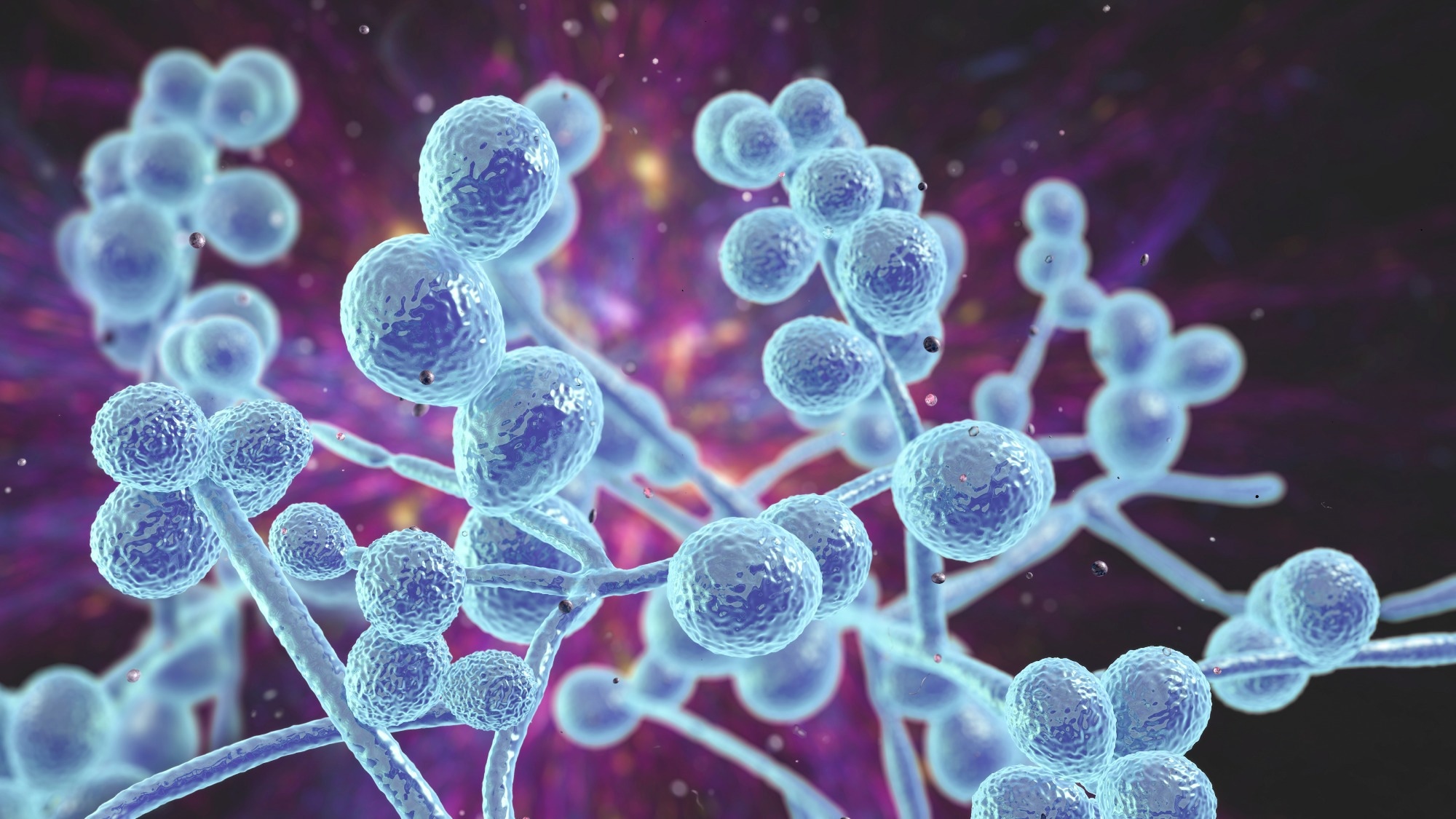In a recent review published in the PLOS Pathogens Journal, researchers reviewed existing data on the potential pathways through which Candida auris can be introduced into the environment and evaluated the environmental characteristics that can influence its persistence and transmission in nature.

Study: Environmental reservoirs of the drug-resistant pathogenic yeast Candida auris. Image Credit: Kateryna Kon/Shutterstock.com
Background
C. auris is an emerging human pathogen; however, despite phenotypic characteristics and genetic evidence indicating its probable emergence from natural reservoirs, data on the environmental phase of the organism's life cycle and associated transmission pathways are limited.
Identifying probable environmental reservoirs and niches of Candida auris, and improving understanding of its emergence in the environmental pollution and climatic change scenario, is essential for developing effective management options and epidemiological responses.
The ability to resist antifungal agents and persist in nosocomial conditions (coupled with poor prognosis) has facilitated the sharp rise in Candida auris infections globally from 2014 onward.
The Centers for Disease Prevention and Control (CDC) and the European CDC (ECDC) have announced C. auris as a threat to public health, requiring urgent action. Similarly, the World Health Organisation (WHO) has stated C. auris to be a critically concerning pathogenic fungus.
About the review
In the present review, researchers determined probable environmental interactions of Candida auris and explored environmental pathways and characteristics facilitating exposure of humans to the organism.
Possible pathways for Candida auris introduction into the environment
Natural environments could significantly contribute to the epidemiology of infectious diseases since pathogenic organisms persist and evolve in natural environmental niches, then transfer to novel hosts. Therefore, investigating the interactions of pathogenic microbes with potential environmental reservoirs is critical for controlling infectious diseases.
C. auris strains may adapt to increasing temperatures (≤42.0 ˚C) and transfer via colonized birds or natural shedding into the surroundings via infected individuals and healthcare workers.
In addition, given the intrinsic resistance of the microbe to antifungals such as fluconazole, C. auris, along with antimycotic drugs, can enter sewage systems through clinical waste discharge, and the contaminated wastewater effluent may then be released into the natural environment.
C. auris may acquire virulence attributes via survival in environments with pH ranging between 4.0 and 13.0, highly mineralized soils, withstanding cationic stresses, and adapting to fungicides in soil. Therefore, enrichment sources include low-level pharmaceutical and agricultural effluents in the runoff, agricultural fungicides, antifungal drugs, and high-salt (≤10.0% NaCl) conditions.
Further, Candida auris detection in indoor-type swimming pools indicates that colonized individuals may shed the pathogen in non-clinical environments.
Candida auris persists on colonized humans' skin, nostrils, and tympanic cavities and has been identified in human fecal and urine samples and rectal swab specimens. Therefore, openly practiced defecation, observed in rural areas of developing nations, could significantly contribute to C. auris loading into the environment.
The halophilic properties of Candida auris may facilitate its persistence in marine ecosystems, supported by the detection of closely related species in coastal wetlands of the Andaman Islands and estuaries in Colombia. C. auris can also sustain on biofilms of dry and inanimate-type surfaces such as plastics and stored fruits for prolonged periods.
Future directions for research on Candida auris
The ecology of closely related species and the high inter-clade genomic differences among C. auris clades, originating in southern regions of America, Africa, south-eastern parts of Asia, East Asia, and Iran, support C. auris epidemiology.
However, the environmental persistence and spread of the thermotolerant, halotolerant, and antifungal drug-resistant microbe are not completely understood and require further research.
Future studies must be aimed at comprehending the environmental prevalence and dissemination of Candida auris and quantifying the environmental persistence and survival of the fungus.
Tools for environmental surveillance need to be developed for rapid detection and quantification of the pathogen in conjunction with community-level surveillance tools.
Importantly, before applying surveillance methods, optimizing the specificity of methods that depend or do not depend on culture is required for Candida auris detection in samples with a high abundance of other Candida species.
Candida auris tolerance of environmental stresses, such as salinity, solar radiation, high temperatures, predation, and competition, must be investigated using environmental conditions. The influence of close microbial interactions in biofilm comprising multiple species on C. auris pathogenicity and environmental persistence also needs further evaluation.
Conclusions
Based on the review findings, the thermotolerant properties of Candida auris enable adaptation to high-temperature environments and facilitate colonization in humans by enduring the temperature barrier, which is considered to protect humans against the colonization of pathogenic microbes. Thus, C. auris is a one-of-a-kind human pathogen, likely to emerge due to climatic change.
Additionally, the release of antimycotic drugs, from agricultural and pharmaceutical sources, into the natural environment is likely responsible for the environmental enrichment of resistant Candida auris strains.
To date, none of the animals have been established as Candida auris reservoirs; however, the pathogen may colonize warm-blooded animals, birds, aquatic animals, and insects.